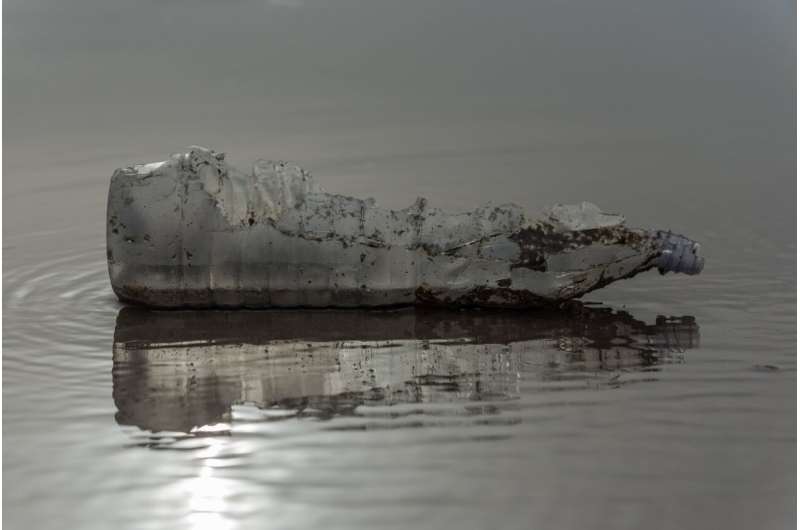This article has been reviewed according to Science X's editorial process and policies. Editors have highlighted the following attributes while ensuring the content's credibility:
fact-checked
peer-reviewed publication
trusted source
proofread
Quantifying microplastics in Swiss rivers and lakes

Every year, 14,000 tons of plastic end up in Swiss soils and waters, in part in the form of microplastics, which are particles in the micro to millimeter range. Microplastics come from many sources, such as cosmetics or synthetic fiber clothing. The tiny particles are also produced by abrasion and decomposition of larger pieces of plastic, so-called macroplastics.
Due to their small size, microplastic particles readily enter waterways. About 15 tons of microplastics enter Swiss rivers and lakes every year. Measuring their concentration in water is not an easy task, because the tiny polymer pieces are often difficult to distinguish from particles of natural origin, and their quantity varies greatly with the time and place of measurement as well as with the measurement method.
Seven most common plastics
In order to get an overview of microplastics pollution in the rivers and lakes of a larger region, for instance for all of Switzerland, measurements alone are often insufficient. That is why Empa researchers David Mennekes and Bernd Nowack have developed a model for the Federal Office for the Environment (FOEN) that can predict the concentration of microplastics in waterbodies nationwide.
As a basis, the researchers used a model developed in 2020 that shows where and in what quantities the seven most common polymers are released into the environment as both macro- and microplastics: polyethylene (LD-PE and HD-PE), polypropylene, polystyrene and expanded polystyrene, PVC and PET, as used in packaging, textiles, insulation and agricultural films. "After we were able to show where and in what amounts plastic enters the environment, the logical next step was to show its concentration," Nowack explains.
Large cities are polluting water bodies
According to the new model, around half of the microplastics that enter Swiss waters remains in the country. About a third of the total amount settles in lakes, the remainder in rivers. However, the exact distribution of microplastics can be complex: A longer river does not automatically retain more particles than a shorter one. Rather, the river basin, the barrages and the lakes determine how much microplastics remains in the river and how much is transported further.
Not surprisingly, particularly high levels of microplastic pollution can be found downstream from major cities. The Rhine near Basel contains the highest concentration of microplastics. The river transports about 4,500 tons of them toward Germany every year. This is also due to the Aare, which, together with its tributaries Reuss and Limmat, drains three of Switzerland's largest cities before flowing into the Rhine: Bern, Zurich and Lucerne.
"Measurements are only possible at specific locations. With our model, on the other hand, we can calculate the microplastic load throughout the country," Nowack says. "Furthermore, it allows us to estimate what effects behavioral changes or government measures would have on microplastic concentrations." The scientists published their findings last week in the new journal Nature Water.
The model can also be applied to other countries and areas. Nowack and Mennekes, meanwhile, are focusing on Switzerland. They are already developing a comparable model to predict the amount of macroplastic—such as PET bottles and plastic bags—in bodies of water. In a next step, the modeled plastic concentrations could also be used to estimate the risk to the environment in the respective regions.
More information: David Mennekes et al, Predicting microplastic masses in river networks with high spatial resolution at country level, Nature Water (2023). DOI: 10.1038/s44221-023-00090-9
Journal information: Nature Water





















